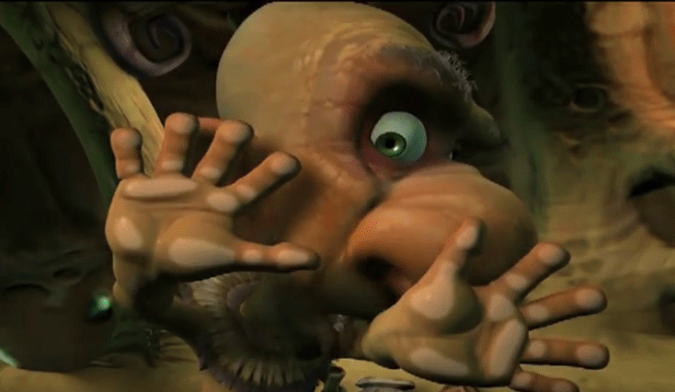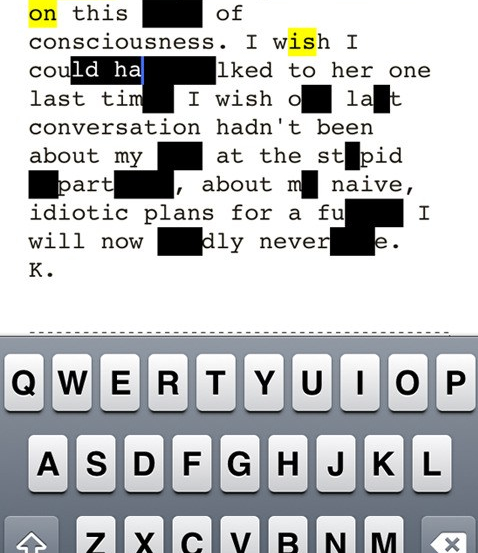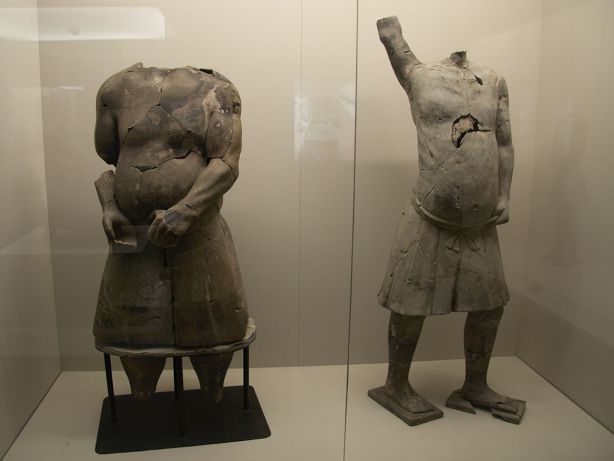
Question 1:
How would…
…you describe the couch to someone else?
…someone else describe it to you?
…the couch describe itself?
(Please read on for answers)
Welcome to our eighth session. Please come in and make yourself comfortable.
Following on from showing and telling last time, today we are looking at who can do the showing and telling in a story and the different ways they can use to do it. This is a story’s narrative viewpoint or, more commonly, its point-of-view. Writers have a lot of different options to choose from with viewpoints and we are going to look at what all of them can offer to a story. In our journey through the history of psychology, we are heading further east to India, where we be learning what the founder(s) of another great world religion can teach us about it. Please choose a place where you can see as much as you want to, and let’s begin.
Who is telling this story?

This question is the starting point for anything to do with POV, and for most stories, whether you are the writer or the audience, it is usually very easy to answer. In a similar way to setting, which we looked at in our fifth session, POV is often something that writers think goes without saying and doesn’t require much thought and (in my experience) they tend to realise they are wrong about this the first time they get tripped up by it. Who is telling a story determines a great deal about it, especially the experience for the audience. To understand this, we need to look at another aspect of fiction first.
Mixed Mediums

We are lucky enough to live in an era when fiction is widely available in lots of different forms. We can read novels, short stories and graphic novels, watch TV series, movies and live theatre performances, listen to radio series and audio books and play video games. POV is something that is mostly associated with literature, and we will be looking mostly at prose fiction examples in this session, but it applies to other mediums of fiction as well and it is connected to why we have so many different mediums to tell stories in.
A prediction that has repeatedly been made over the last century and a half, every time a new medium has arrived, is that it will compete with and eventually eliminate an established one. Over the 20th century, it was feared that cinema would replace theatre, TV would replace cinema, the internet would replace TV and that all of them combined would kill off books. None of these have quite happened and certainly not as badly as predicted. While recording mediums tend to come and go and get replaced by more efficient ones (cassettes, CDs, VHS tapes, laserdiscs, etc), the mediums themselves have all survived and they are all still regularly used to tell stories.
The reason for this is that every medium offers something unique. In each one, it is possible to do things that you cannot do in any of the others. Here in Britain for example, radio comedy series have never been killed off by TV sitcoms because being able to hear the action, but not see it provides opportunities for jokes that are not possible otherwise. Take this moment from BBC Radio 4’s fantasy comedy series Elvenquest, when the evil Lord Darkness is talking to his henchman Kreech:
KREECH: You look a bit down-in-the-dumps, Lord.
LORD DARKNESS: I am.
KREECH: Feeling glum, I see.
LORD DARKNESS: Yes. (Beat). But it’s not helping. You may go, Glum.
GLUM: Yes, my lord.
FX: Heavy footsteps walking away.
Different viewpoints in fiction work in a very similar way. Each one offers a unique way of telling the story and each results in a different experience for the audience. Depending on what kind of story you want to tell, choosing the right viewpoint will allow you to do it in the best way to convey the story experience you are aiming for to your audience.
Through someone else’s eyes

The only way to look at the different viewpoints in prose fiction is with examples. I need to mention at this point that, while there is a lot of information and advice on viewpoint out there for writers, there is no agreed-on list of how many viewpoints there are. Just like everything else in fiction, lots of them can overlap, there are exceptions to the rule for all of them and this is a part of fiction where a writer’s individual voice and style play a big part. I am going to be as comprehensive as I can think of here, but if I miss anything, please let me know in the comments.
1st Person Classic:
“I had been stalking the bluebottle fly for five minutes, waiting for him to sit down. He didn’t want to sit down. He just wanted to do wing-overs and sing the prologue to Pagliacci. I had the fly swatter poised in midair and I was all set. There was a patch of bright sunlight on the corner of the desk and I knew that sooner or later that was where he was going to light. But when he did, I didn’t even see him at first. The buzzing stopped and there he was. And then the phone rang.”
Raymond Chandler. The Little Sister.
(The easiest viewpoint to learn and work with, 1st Person Classic takes the reader inside a character’s head and lets them see the story through their eyes. Everything they experience is shared directly and it offers fascinating variations such as unreliable narrators).

Seeing through a characters eyes: 1st person perspective in a videogame (The Avengers 2012)
1st Person Immediate:
“I’m doing sixty down Highgate Hill and the Laughy Woman is doing my head in. Titch is all set to ask this morning’s questions on Titch’s Triffic Tips but she won’t let him get a word in. Fair enough, have a laughy woman by all means, most breakfast shows have one and, to be honest, when you’re half brain-dead in the mornings and you’ve joined the legion of sad bastards on the way to work, it’s quite reassuring to have some over-cheerful woman laughing her head off at the trivial inanities of the DJ. But the trouble is that I’m not on the right wave length this morning, mentally that is. Rather than eight hours sleep, followed by a shower and coffee in preparation for this banal breakfast bollocks, I’ve been pulling on huge reefers at Luke’s place in a vain attempt to calm myself down from an ill-advised acid trip in readiness for Ma Kettle.”
Max Kinnings. Hitman.
(While 1st Person Classic has a character telling their story after the fact, Immediate tells it as it is happening, allowing action, drama and suspense to become much more powerful).
1st Person Plural:
“When the paramedics were satisfied they had reduced the bleeding to a trickle, they put Cecilia on a stretcher and carried her out of the house to the truck in the driveway. She looked like a tiny Cleopatra on an imperial litter. We saw the gangly paramedic with the Wyatt Earp mustache come out first— the one we’d call “Sheriff” when we got to know him better through these domestic tragedies— and then the fat one appeared, carrying the back end of the stretcher and stepping daintily across the lawn, peering at his police issue shoes as though looking out for dog shit, though later, when we were better acquainted with the machinery, we knew he was checking the blood pressure gauge.”
Jeffrey Eugenides. The Virgin Suicides.
(Rather the showing how the events of a plot affect one person, Plural shows how they affect a group. It allows a literally wider view of the action than any one character can provide by merging lots of individual viewpoints into one).
2nd Person:
“What a singular moment is the first one, when you have hardly begun to recollect yourself after starting from midnight slumber! By unclosing your eyes so suddenly, you seem to have surprised the personages of your dream in full convocation round your bed, and catch one broad glance at them before they can flit into obscurity. Or, to vary the metaphor, you find yourself, for a single instant, wide awake in that realm of illusions, whither sleep has been the passport, and behold its ghostly inhabitants and wondrous scenery, with a perception of their strangeness, such as you never attain while the dream is undisturbed. The distant sound of a church-clock is borne faintly on the wind.”
Nathanial Hawthorne. The Haunted Mind.
(2nd person offers the ultimate in an interactive story by making the reader a character in it. While not that popular in prose fiction (where it runs the constant risk of making the reader a character who they won’t like), it can shine in specialised genres such as Choose Your Own Adventure multiple-choice-storyline books. In my opinion, it is most effective when it makes the audience a secondary character; as we see in film, TV and theatre when characters break the fourth wall, directly address the audience and involve them in the story).

Breaking the Fourth Wall: 2nd Person in theatre. William Shakespeare’s Othello. Iago (played here by Kenneth Branagh in Oliver Parker’s 1995 film version) confides in the audience and shares his plans for revenge as he puts them into action.

2nd person in a videogame: a character tries to literally break the fourth wall of the TV screen and enter the real world of the player. (Tak and the Power of Juju. 2003).

“Oh, don’t deny it. You’ve loved it. You don’t actually need me to stand for anything. You just need me to stand … Just as long as I’m doing something, you’re happy to be along for the ride.”
President Frank Underwood (Kevin Spacey) , explains the appeal of 2nd person in an in-joke on Netflix’s House of Cards.
3rd Person Close:
“James Bond, with two double bourbons inside him, sat in the final departure lounge of Miami Airport and thought about life and death. It was part of his profession to kill people. He had never liked doing it and when he had to kill he did it as well as he knew how and forgot about it. As a secret agent who held the rare double-O prefix—the licence to kill in the Secret Service—it was his duty to be as cool about death as a surgeon. If it happened, it happened. Regret was unprofessional—worse, it was death-watch beetle in the soul. And yet there had been something curiously impressive about the death of the Mexican.”
Ian Flemming. Goldfinger.
(The simplest of the 3rd persons, also called over-the-shoulder viewpoint, provides a nameless additional character who narrates the story. This has all the advantages of 1st Person Classic and Immediate, but without the limits of seeing through only one person’s eyes).

Looking over a character’s shoulder: 3rd person close in a videogame (Resident Evil 5 2009).
3rd Person Distant:
“Emma Woodhouse, handsome, clever, and rich, with a comfortable home and happy disposition, seemed to unite some of the best blessings of existence; and had lived nearly twenty-one years in the world with very little to distress or vex her. She was the youngest of the two daughters of a most affectionate, indulgent father; and had, in consequence of her sister’s marriage, been mistress of his house from a very early period. Her mother had died too long ago for her to have more than an indistinct remembrance of her caresses; and her place had been supplied by an excellent woman as governess, who had fallen little short of a mother in affection. Sixteen years had Miss Taylor been in Mr. Woodhouse’s family, less as a governess than a friend, very fond of both daughters, but particularly of Emma. Between them it was more the intimacy of sisters.”
Jane Austen. Emma.
(Similar to 1st Person Plural, Distant allows you to look over the shoulders of your entire cast and provide a viewpoint that takes in the whole story).
3rd Person Omniscient:
“And Jessica thought: How do I tell Chani?
“How is my grandson?” Jessica asked.
So it’s to be the ritual greeting, Chani thought, and her fears returned. Where is Muad’Dib? Why isn’t he here to greet me?
“He is healthy and happy, my mother,” Chani said. “I left him with Alia in the care of Harah.”
My mother, Jessica thought. Yes, she has the right to call me that in the formal greeting. She has given me a grandson.
“I hear a gift of cloth has been sent from Coanua sietch,” Jessica said.
“It is lovely cloth,” Chani said.
“Does Alia send a message?”
“No message. But the sietch moves more smoothly now that the people are beginning to accept the miracle of her status.”
Why does she drag this out so? Chani wondered. Something was so urgent that they sent a ‘thopter for me. Now, we drag through the formalities!
“We must have some of the new cloth cut into garments for little Leto,” Jessica said.
“Whatever you wish, my mother,” Chani said. She lowered her gaze. “Is there news of battles?” She held her face expressionless that Jessica might not see the betrayal – that this was a question about Paul Muad’Dib.”
Frank Herbert. Dune.
(Combining 3rd Person Close and Distant, Omniscient allows you to show every detail of a story and of each character’s arc, but it is notorious for being easy to screw up and very hard to get right (I’ve tried many times and have never once managed to do it to my own satisfaction) but it can be brilliant when you do).
3rd Person Subjective:
“The waiter, who had slipped out to make a quick telephone call, came back into the coffee room of the Goose and Gherkin wearing the starry-eyed look of a man who has just learned that he has backed a long-priced winner. He yearned to share his happiness with someone, and the only possible confidant was the woman at the table near the door, who was having a small gin and tonic and whiling away the time by reading a book of spiritualistic interest. He decided to tell her the good news. “I don’t know if you would care to know, madam,” he said, in a voice that throbbed with emotion, “but Whistler’s Mother won the Oaks.” The woman looked up, regarding him with large, dark, soulful eyes as if he had been something recently assembled from ectoplasm. “The what?”
P.G. Wodehouse. Ring for Jeeves.
(Here, the additional character who narrates the story is still nameless, but they have a clear and distinct personality. They reveal their own thoughts and feelings, share their interpretations and make jokes on the action of the story, making it much more emotive).
3rd Person Objective:
“Kiyoyori returned to the house he kept in the city, below Rokujo, angered and disturbed by this conversation. The Miboshi were preparing to challenge the Kakizuki in the capital itself. They were so confident of success they were already redistributing land in their own law courts. And their most powerful ally, the Prince Abbot, had already turned his attention to Matsutani. He felt he should return without delay to Matsutani but he was also needed in the capital. He was agitated by Keita and Masafusa’s apparent lack of concern. Would the Miboshi and the Prince Abbot really dare to attack Prince Momozomo? And would the Kakizuki have the ability and the will to defend him?”
Lian Hern. Emperor of the Eight Islands.
(The opposite of 3rd Person Subjective, the nameless additional character here narrates the action with no personal input at all, giving the audience complete freedom for interpretation).
Stream-of-consciousness:
“For having lived in Westminster — how many years now? over twenty — one feels even in the midst of the traffic, or waking at night, Clarissa was positive, a particular hush, or solemnity; an indescribable pause; a suspense (but that might be her heart, affected, they said, by influenza) before Big Ben strikes. There! Out it boomed. First a warning, musical; then the hour, irrevocable. The leaden circles dissolved in the air. Such fools we are, she thought, crossing Victoria Street. For Heaven only knows why one loves it so, how one sees it so, making it up, building it round one, tumbling it, creating it every moment afresh; but the veriest frumps, the most dejected of miseries sitting on doorsteps (drink their downfall) do the same; can’t be dealt with, she felt positive, by Acts of Parliament for that very reason: they love life.”
Virginia Woolf. Mrs Dalloway.
(Similar to 1st Person Classic, Immediate and 3rd Person Close, S-of-C goes deeper and shows everything that is happening in a character’s mind and reveals exactly how and why they react to the events of the story).

Stream of Consciousness on TV: David Mitchell and Robert Webb in “Peep Show” (Channel 4 UK). Seeing through a character’s eyes and hearing their thoughts.
Epistolary:
“Jonathan Harker’s Journal
3 May. Bistritz.–Left Munich at 8:35 P.M., on 1st May, arriving at Vienna early next morning; should have arrived at 6:46, but train was an hour late. Buda-Pesth seems a wonderful place, from the glimpse which I got of it from the train and the little I could walk through the streets. I feared to go very far from the station, as we had arrived late and would start as near the correct time as possible. The impression I had was that we were leaving the West and entering the East; the most western of splendid bridges over the Danube, which is here of noble width and depth, took us among the traditions of Turkish rule. We left in pretty good time, and came after nightfall to Klausenburgh. Here I stopped for the night at the Hotel Royale. I had for dinner, or rather supper, a chicken done up some way with red pepper, which was very good but thirsty. (Mem. get recipe for Mina.) I asked the waiter, and he said it was called “paprika hendl,” and that, as it was a national dish, I should be able to get it anywhere along the Carpathians. I found my smattering of German very useful here, indeed, I don’t know how I should be able to get on without it. Having had some time at my disposal when in London, I had visited the British Museum, and made search among the books and maps in the library regarding Transylvania; it had struck me that some foreknowledge of the country could hardly fail to have some importance in dealing with a nobleman of that country.”
Bram Stoker. Dracula.
(By telling a story through a collection of diary entries, letters, newspaper cuttings, notes, emails, texts, tweets, etc. epistolary gives a great sense of realism and audience participation similar 2nd Person. While not technically a viewpoint in the same sense as the others, it is very useful if you want to mix or switch between viewpoints, which can otherwise seem very awkward and unnatural).

Epistolary in a video game: piece together the story from a character’s messages. (Blackbar 2013).
Knowing where to look
Deciding which viewpoint to use for a story is sometimes easy and sometimes isn’t. A story’s viewpoint will sometimes come included in your inspiration, such as how a particularly strong lead character will almost require that they tell their own story in 1st person classic, but other times, you will need to look for it, consider the options and sometimes experiment to find it. I am in the middle of writing a novel at the moment that has had a series of false starts due to viewpoint. My initial plan was to write it in multiple 3rd person close; alternating chapters between the viewpoints of the six man characters. I quickly found this would not work as the story moved too fast and I couldn’t give all of the characters equal time and still make their sections relevant to the overall story. Instead, I tried 3rd person omniscient, which solved the problem, but created a new one, because the narrator was now revealing so much information about the characters and the story that I was left with nothing for the characters to talk to each other about without them repeating the narrator. I’m currently writing version three using a combined 3rd Person Distant/Subjective narrator, who doesn’t get too close to the characters, but who contributes to the story’s humour, which is working much better. On other occasions, I have been torn between different possibilities for what to do with a story idea until I’ve found the right voice for my narrator (1st or 3rd) and then everything has fallen into place. Writer Joseph Bates offers these tips for finding your viewpoint.
“Point of view, or POV, has to do with the narrator’s relationship to what’s being said:
Is the narrator a participant in the events being told, an observer of those events, or someone reconstructing the events from a distance?
Does the narrator announce its presence openly or try to remain invisible?
Is the narrator seemingly dispassionate and detached, or does the narrator have a clear opinion of, or stake in, the story?
Is the narrator qualified to tell the story in terms of access to information and the ability to provide that information to us? And do we trust what’s being said?
All are questions you have to ask yourself of POV, as each kind opens up and allows certain freedoms in telling a story while limiting or denying others. The goal in selecting a point of view is not simply finding a way to convey information but being able to tell it the right way, making the world you create understandable and believable.”
All viewpoints in fiction are literally different ways of looking at the world. However you do it, though, you still need to interpret what you see and find there, so for help with that, let’s now head to ancient India.
The Wheel, the Tree and the Lotus

The origin story of Buddhism is well-known enough that I’m not going to bother repeating it here. Suffice to say that our stop in this session is in Bihar in north-eastern India, sometime between 500-400BC, after Siddhartha Gautama has achieved enlightenment and he and his followers are building and compiling his teaching and theories into what will eventually become the three books of the Tripitaka. Siddhartha’s goal was to understand the causes of suffering in the world and hopefully find solutions for it. Because of this, he spent a lot of time observing the world and the people around him and his teachings contain plenty of observations on human nature and psychology.

The Bodhi Tree at the Maha Bodhi Temple. According to legend, the one Siddhartha sat under for nine years.
His main ideas can be summed up like this: There is too much dukkha (pain, suffering, stress, unsatisfying stuff and stuff incapable of being satisfying) in the world. This is because all human beings feel tanha (desires, longings, cravings and hungers), but everything in the world is sankhara (impermanent and transitory) so tanha can never be satisfied permanently. The result is samsara; we live, suffer due to our tanha creating dukkha, die, are reincarnated and do it all again in an endless cycle. If, however, you concentrate on letting go of tanha, you can achieve nirvana (the “blowing out”; extinguishing of all desire), which will give you moksha (liberation from the cycle).
Siddhartha studied tanha in detail and identifies three types:
Kama-tanha: Craving for pleasurable sense experiences. The hunger for anything that pleases our bodily senses (sight, hearing, smell, taste and touch, but also sexual urges), such as good food, good music, pleasant scents, etc.
Bhava-tanha: Craving for a pleasurable existence. The ambition to be more than we currently are; richer, cleverer, funnier, braver, famous, etc.
Vibhava-tanha: Craving not to experience anything unpleasant. The desire to avoid feeling anything negative or physically or mentally painful. Buddhism calls this ‘craving for non-existence’, as in “This is so bad I wish I was dead.”
One thing that often gets noted about early Buddhism is that it has a lot in common with ancient Greek philosophy. Here, we can see echoes of Aristotle and Plato’s emphasis on desire, Epicurus’s goal of ataraxia and Zeno’s of apatheia and the question has been asked if it is possible that there could have been contact between ancient Indian and Greek philosophers. There is no specific evidence of this preserved in the west, but it is not beyond the realm of possibility due to Alexander the Great’s empire (which is probably how Aristotle was able to write in great and mostly-accurate detail about the anatomy of elephants in De Anima) and there is one inscription in the edicts of Emperor Ashoka of India’s iron age Maurya empire which speaks of him sending Buddhist missionaries to Greek rulers.

The Khalsi Rock Edict of Ashoka (3rd century) lists five historical Greek rulers by name.

Ancient Greeks in the Far East? “The Acrobats” (or possibly wrestlers) of the Terracotta Army (210-209 BC) from the tomb of the first Emperor of China. These show a realism that there is no artistic traddition for in China prior to them, so they may have been made by Greek or Greek-trained sculptors.
However, I personally think it is equally possible that the ideas could have been developed separately. Most of us have experienced times in our lives when our desires, appetites and cravings have made us miserable, and Greek thinkers observing the world and people around them could easily have reached the same conclusions as Siddhartha did. Going through the three types of tanha; they could also have realised that no sensory pleasures are permanent, but some can become addictive and trying to satisfy them can lead us to make choices or sacrifices that we should not because they will badly affect us or our loved ones. Ambition to be more or better than we are can lead us to make the same mistakes when we chase it too hard at the expense of other parts of our lives, and some, such as to be better looking, are impossible or almost impossible to achieve. (Cosmetic surgery does have a longer history than most people realise, going back to the ancient Egyptians, but it has always been largely only available to the wealthy). Avoiding suffering entirely in life is difficult to the point of impossible and, as a lot of philosophers argue, doing so can carry its own price as we miss out on the lessons that suffering and hardship can teach us. We also all know too well how much misery and suffering suicide can cause to a person’s loved ones.
Connected to ancient Greek thought or not, how your characters feel tanha can add a lot to their personalities, and how they react to it can contribute to the plot of your story. If you can find the optimum viewpoint to tell it with, your audience will feel it too.
“Take my chair. Yours is the psychology everyone will be studying 25 years from now.”
William James (a man we will meet again later) offering his seat to a Buddhist monk at Harvard University in 1903.
Top Ten Points of View: (Please put them in whatever order you think is best):
–
–
–
–
–
–
–
–
–
–
Bibliography
The Wise Heart: A guide to the universal teachings of Buddhist psychology – Jack Kornfield. Bantam. 2009.
In the Buddha’s Words: An Anthology of Discourses from the Pali Canon – Bhikkhu Bodi. Wisdom Publications. 2005.
Writing Your Novel from Start to Finish: A Guidebook for the Journey – Joseph Bates. Writer’s Digest Books. 2015.
The Relationship between the Psychology of Religion and Buddhist Psychology – Hiroki Kato. Wiley Online Library. 2016.
The Lagoon: How Aristotle Invented Science – Armand Marie Leroi. Viking Books. 2014.
Empire of Dreams: The Epic Life of Cecil B. DeMille – Scott Eyman. Simon and Schuster. 2010.
https://en.wikipedia.org/wiki/Dukkha
http://daronlarson.blogspot.co.uk/2008/12/three-kinds-of-craving.html
https://en.wikipedia.org/wiki/Buddhism_and_psychology
https://en.wikipedia.org/wiki/Ta%E1%B9%87h%C4%81
https://en.wikipedia.org/wiki/Dhammacakkappavattana_Sutta
https://en.wikipedia.org/wiki/Four_Noble_Truths
http://webspace.ship.edu/cgboer/buddhapers.html
https://jerichowriters.com/points-of-view-fiction/
https://thewritepractice.com/point-of-view-guide/
http://users.humboldt.edu/tduckart/PoV.htm
https://www.novel-writing-help.com/second-person-point-of-view.html
https://www.writermag.com/2016/11/02/second-person-pov/
https://www.theguardian.com/technology/gamesblog/2010/nov/08/andy-serkis-enslaved-interview
Images:
https://www.herzig-eye.com/procedures/high-definition-vision/
http://storytellerjohnweaver.blogspot.com/2012/03/storyteller-at-work-serious-play.html
http://gredelin.se/kurser/mixed-media-dagar
https://www.geek.com/games/how-the-first-person-avengers-video-game-died-1640769/
https://www.imdb.com/title/tt0114057/mediaviewer/rm4166189312
https://en.wikipedia.org/wiki/Resident_Evil_5
http://journeymart.com/de/india/bihar/bodhgaya/bodhi-tree.aspx
https://www.amarujala.com/dehradun-city/Dehradun-66300-11
https://en.wikipedia.org/wiki/Bihar
https://monotonundminimal.wordpress.com/tag/terracotta-warriors/